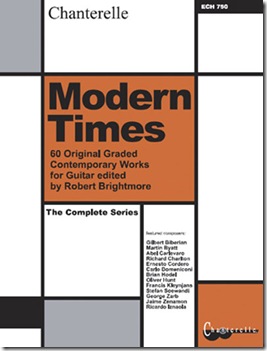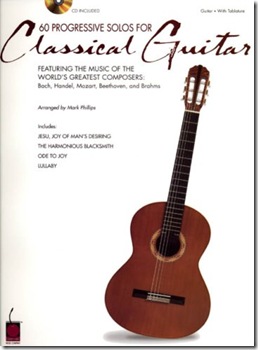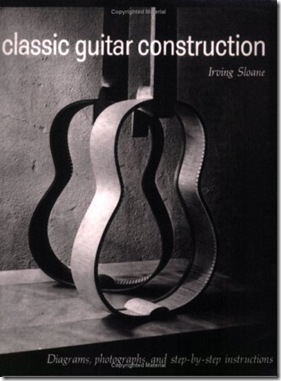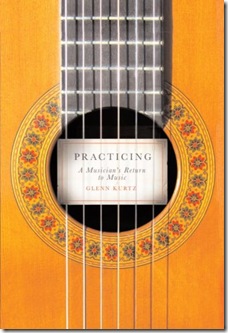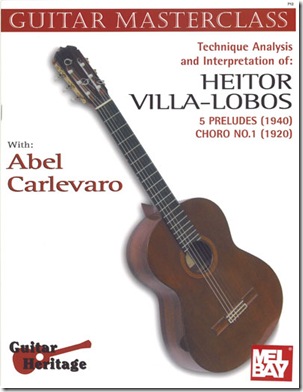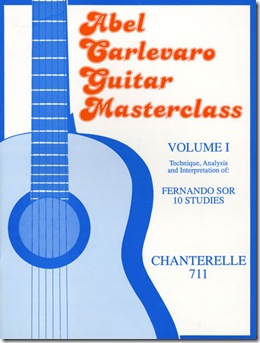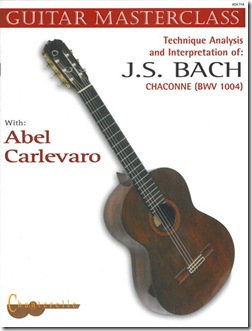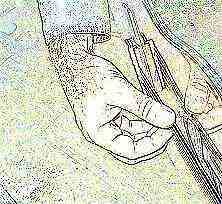First published in five separate volumes, each original book is progressive and presents carefully selected pieces, graded in accordance with the various grading standards (grades 1-6) worldwide.The originality and imagination of the composers presented here speaks for itself and we hope that Modern Times will be a source of pleasure to young students, players and teachers alike.
The pieces presented here have been conceived with certain priorities in mind. The overriding consideration that Robert Brightmore has given to editing this series is that musical expression dictating the required technique should be foremost in the mind, thus initiating a more creative approach to music-making. To this end, the repertoire chosen gives priority to phrasing of the melodic line and rhythmic understanding, as well as dynamic shape and contrast.
Each book further broadens the scope of technique, movement, positioning, the use of slurs, general expression, phrasing and articulation.
Thursday, July 24, 2008
Modern Times, 60 Original Graded Contemporary Works for Guitar
60 Progressive Solos for Classical Guitar
60 Progressive Solos for Classical Guitar: Featuring the Music of the World's Greatest Composers: Bach, Handel, Mozart, Beethoven and Brahms
By Mark Phillips
Publisher: Cherry Lane Music
Number Of Pages: 120
Publication Date: 2003-08-01
ISBN-10 / ASIN: 1575606283
ISBN-13 / EAN: 9781575606286
Binding: Paperback
Product Description:
Most classical guitar folios feature compositions by the lesser-known guitar composers. This collection, however, exclusively features music by the world's most renowned composers. The works of Johann Sebastian Bach and George Frederick Handel represent the culmination of the Baroque era. Wolfgang Amadeus Mozart stands at the summit of the Classical era. Ludwig van Beethoven straddles the Classical and Romantic eras, and Johannes Brahms is the giant of the Romantic era. For educational purposes, the pieces have been organized in order of difficulty within each composer's section. In addition, complete performances of all pieces can be heard on the accompanying CD. Enjoy! Includes: Jesu, Joy of Man's Desiring The Harmonious Blacksmith Ode to Joy Lullaby and more.
Wednesday, July 23, 2008
Classic Guitar Construction
Classic Guitar Construction
By Irving Sloane
Publisher: Bold Strummer
Number Of Pages: 100
Publication Date: 1989-10
ISBN-10 / ASIN: 0933224141
ISBN-13 / EAN: 9780933224148
Binding: Paperback
Summary: Classical Guitar Construction
Rating: 5
This book is actually on $23.95 and still in print.
Nicholas Clarke
The Bold Strummer Ltd
Summary: A valuable text for anyone studying guitar construction.
Rating: 5
Classic Guitar Construction takes you step by step through the construction of a fine classic guitar. The book contains complete plans for an instrument, although the information is scattered and the body is shown half scale. Sloane uses very few power tools, explaining how to make and use the special jigs and tools you will need. The author describes wood selection, choice of adhesives, and finishing methods. The relatively low price makes this an easy choice for anyone wanting to build classic guitars or study their construction.
Practicing: A Musician's Return to Music
Practicing: A Musician's Return to Music
By Glenn Kurtz
Publisher: Knopf
Number Of Pages: 256
Publication Date: 2007-06-19
ISBN-10 / ASIN: 030726615X
ISBN-13 / EAN: 9780307266156
Binding: Hardcover
Product Description:
The remarkable odyssey of a classical guitar prodigy who abandons his beloved instrument in defeat at the age of twenty-five, but comes back to it years later with a new kind of passion.
With insight and humor, Glenn Kurtz takes us from his first lessons at a small Long Island guitar school at the age of eight, to a national television appearance backing jazz legend Dizzy Gillespie, to his acceptance at the elite New England Conservatory of Music. He makes bittersweet and vivid a young man?s struggle to forge an artist?s life?and to become the next Segovia. And we see him after graduation, pursuing a solo career in Vienna but realizing that he has neither the ego nor the talent required to succeed at the upper reaches of the world of classical guitar?and giving up the instrument, and his dream, entirely.
Or so he thought. For, returning to the guitar, Kurtz weaves into the larger narrative the rich experience of a single practice session, demonstrating how practicing?the rigor, attention, and commitment it requires?becomes its own reward, an almost spiritual experience that redefines the meaning of ?success.? Along the way, he traces the evolution of the guitar and reminds us why it has retained its singular popularity through the ages.
Complete with a guide to selected musical recordings and methods, Practicing takes us on a revelatory, inspiring journey: a love affair with music.
Download: http://www.sendspace.com/file/vuv6nq
Saturday, July 19, 2008
Carlevaro, Abel - Guitar Masterclass - Villa-Lobos 12 Studies
Description:
In this book, masterful Uruguayan guitarist and teacher Abel Carlevaro (1918-2001) offers insights to the performance of the ?12 Studies? (1929) by Heitor Villa-Lobos. Without presenting the complete works being analyzed, Carlevaro guides the student through the most challenging parts of each of these twelve landmark pieces. Using short examples and facsimiles of a few bars of the original manuscripts given to him by Villa-Lobos himself, Carlevaro reveals profound and illuminating insights. For the advanced student, it?s almost like being in a real master class with the maestro himself. This book is written in standard notation only."Villa-Lobos gave birth to the modern guitar, forging a new path for it; the newly expanded musical and technical possibilities have greatly benefited the repertoire for the instrument." -Abel Carlevaro
Product Number: ECH713
Format: Book
Language: English
ISBN: 020470104X
ISBN13: 9790204701049
Series: Chanterelle
Publisher: Chanterelle
Date Published: 7/30/2007
Carlevaro, Abel - Guitar Masterclass - Heitors Villa Lobos
Description:
In this book, masterful Uruguayan guitarist and teacher Abel Carlevaro (1918-2001) offers insights to the performance of the ?5 Preludes? (1940) and ?Choro No. 1? (1920) by Heitor Villa-Lobos. Without presenting the complete works being analyzed, Carlevaro guides the student through the most challenging parts of each of these landmark pieces. Using short examples in standard notation only, Carlevaro reveals profound and illuminating insights; for the advanced student, it?s almost like being in a real master class with the maestro himself.
"The guitar of Villa-Lobos opened up new paths in musical expression. Without doubt, through a surprising process of self teaching, he created an innovative technique that could not have been learnt in an academy, and also a personal technique, original because of its truthfulness, its message, its humanity and its life." -Abel Carlevaro
Product Number: ECH712
Format: Book
Language: English
ISBN: 0204701031
ISBN13: 9790204701032
Series: Chanterelle
Publisher: Chanterelle
Date Published: 7/30/2007
Carlevaro, Abel - Guitar Masterclass - Fernando Sor's
Product Description:
Technique, Analysis and Interpretation of 10 of Fernando Sor's best known Studies.
Product Number: ECH711
Format: Book
Language: English
ISBN: 3890440231
ISBN13: 9783890440231
Series: Chanterelle
Publisher: Chanterelle
Date Published: 9/27/2007
Friday, July 18, 2008
Carlevaro, Abel - Guitar Master class
Description:
A technique analysis and interpretation of J. S. Bach?s Chaconne (BWV 1004) presented by the exceptional virtuoso, composer and teacher, Abel Carlevaro. The transcription is based on the original score for violin and has been adapted for guitar conserving the original style and spirit. Contents include sections on General Considerations, Mechanical Aspects, The Music Score of the Chaconne, The Manuscript of the Chaconne and Glossary of Technical Terms.
Product Number: ECH714
Format: Book
Language: English
ISBN: 3890770630
UPC: 796279102643
ISBN13: 9783890770635
Series: Chanterelle
Publisher: Chanterelle
Date Published: 8/14/2006
About the Author
Abel Carlevaro, an exceptional virtuoso, composer and teacher born in Montevideo, Uruguay is not only one of the most important guitarists of our time but the creator of a new school of instrumental technique as well. He has been recognised as an exceptional performer worldwide and has gained the admiration and esteem of musicians such as Heitor Villa Lobos and Andrés Segovia. His performances in the most important music centres in Europe, Latin America and the United States have been acclaimed with high praise by the public and the critics alike. Carlevaro is a devoted composer. His musical production ranges from his "Preludios Americanos" which already form part of the repertoire of renowned guitarists in America and Europe, to his "Concierto No 3 para Guitarra y Orquesta" composed by request of and played for the first time by The Chamber Symphony of San Francisco. Other contemporary I ensembles of renown such as The San Francisco Contemporary Music Players and The Kronos Quartet have also performed some of Carlevaro's works for the first time. His "Concierto del Plata" for guitar and orchestra has been interpreted by important European and American symphony orchestras. A profound and dedicated teacher, Carlevaro is the creator of a new school of instrumental technique, a fundamental milestone in the evolution of the guitar expounded in his book "Escuela de la Guitarra Exposición de la Teoría Instrumental" (School of Guitar Exposition of Instrumental Theory), in the didactic series the "Cuadernos" as well as in the "Carlevaro Masterclass" series. These pedagogical works as well as his compositions and transcriptions are edited by Boosey and Hawkes of New York, Chanterelle Verlag of Heidelberg, Barry Editorial of Buenos Aires and Henri Lemoine of Paris. An indefatigable researcher, Carlevaro has also invented a new guitar, the conception and design of which break away totally from traditional guitar making. Every year Maestro Carlevaro offers Masterclasses in Europe and America and is often invited to take part in juries at international competitions for interpretation and composition. To acknowledge his exceptional merits and his relevant work in music, on March 18, 1985 the Organisation of American States granted Abel Carlevaro its highest honour, the prestigious Diploma de Honour, and in 1987 the Government of Venezuela, in public ceremony, honoured him with the Order of "Andrés Bello". Taken from Aires de Vidalita: Sobre un Tema de E. Cotelo, published by Chanterelle Verlag.
Friday, July 11, 2008
Learn To Play Classical Guitar Without Nails
Is it possible to play classical guitar without nails? I guess so as I often do it myself. Many guitarists today and in the past have also done the same. Let me tell you the advantages of no nails playing and give you some tips!
Sharon Isbin in her Classical Guitar Answer Book wrote…
"Classical guitarists can play without nails, but they should be aware that in doing so they are sacrificing certain possibilities of tone color and projection – all of which affect interpretation and musical presentation."
I have played classical guitar and also improvisational jazz and blues guitar for many years and have been teaching others professionally. I have played with long nails, shorter nails and no nails at all.
I have seen guitar students struggling with their tone on the guitar. Guitarists with problem nails, guitarists not taking care of their nails and subsequently with a terrible tone and some guitarists with perfect nails and still not a good tone because of faltering technique.
I have also met guitarists that were playing without nails and I have seen electric guitarists finger playing without nails like Mark Knopfler and others.
As with nearly everything there are pros and cons with the different approaches. I like playing without nails for these reasons:
- It's a challenge to find the tone and get the most out of the guitar playing without nails. You have to play with more force to find the upper harmonics and you have to work even more with the guitar technique. No sloppiness is allowed!
- I like the sweet sound of my fingers touching the strings. The sound created is mellow but the volume will still be satisfying if you play with force and with calousses developed by practising.
- There is a special feeling involved in letting living flesh touch the strings on a guitar. You will come nearer the instrument somehow.
- Of course you'll have the advantage of not risking to have your nails broken as you don't depend on them anymore.
- You will be able to play piano with correct finger posture.
- You can play electric guitar with your fingers without risking to destroy your nails.
I will now give you some of my own advice and experiences from playing without nails.
You might find some more information on the net as there are many other classical guitarists and lute players who want to play without nails. Here are my personal hints:
- It will take a week or so to build callouses on your fingertips after having filed down your nails. This will improve your guitar playing and tone but until then you have to be careful not to play so intensely as to get blisters.
- A way to build callouses is to play finger picking on electric guitar or steel string guitar. I have experienced that my blues guitar playing is much more musical and more dynamic as I play with my fingers instead of with a pick on my electric guitar. Sometimes I use to alternate between my thumb and index finger when playing scales and licks and other times my index finger and middle finger or in another classical guitar playing way.
- You will get a softer and in many ways a more beautiful tone if you cultivate your playing without nails. However you might miss some of the higher frequencies. To compensate for this you can see to it that you
always play with fresh new strings and if you are a rich man you might purchase a classical guitar with more treble and less bass. - When you use your nail sharpener (you should instead of just clipping the nails off!) to keep your nails short you might as well give your fingertips some grooming with the nail sharpener. This will improve your tone and stimulate your finger tips to become harder.
- As you practice exercises on your guitar you need to play slowly and with a little more force to get a good tone. It is important that you don't build tensions as you play. All musicians benefit from learning relaxation techniques and stretching to prevent injuries.
- Practice especially playing apoyando (support strokes) with all your fingers and listen to the tone and try to improve it as part of your playing.
If you feel that playing completely without nails is to hard for you, you might after this test period let them grow but you can keep them a lot shorter as your technique has improved. They will then work as the claws of a cat. Mostly not used but still affecting your tone and supporting your playing. As with long nails you will have to polish them and take care of them.
There are many more things to say about playing guitar without nails but personally this technique gives me a tone I like and an exciting and rewarding challenge.
Tuesday, July 8, 2008
A Recommended Repertoire for the beginner classical guitarist.
One of the most difficult things for a beginning classical guitarist is trying to find a repertoire that is not too hard to play but still sounds good and has a nice variety of pieces. Here is a nice list of guitar pieces that fits those requirements nicely.
You can probably browse around the web and find some free versions.
Range of Repertoire - these pieces span quite a few different centuries and genres. There are old pieces by Mozart and Bach, newer pieces my Beethoven and Tarrega and pieces from traditional classical guitar to Spanish guitar. Learning these pieces will give you a great standard repertoire that everyone can enjoy even if they don't listen to classical music because most of the pieces are very recognizable.
Classical Guitar Sheet Music - 9 Beginner Pieces
Moonlight Sonata - Beethoven - If you are a real beginner and would like to play an easy song that sounds great this is the first piece you should consider. It sounds absolutely beautiful in a haunting kind of way and it is a nice slow piece so you will be able to master it with little trouble. This is a great first classical guitar piece.
Allegro by Mozart - Another very easy piece to play and it sounds great. It has more of an early classical music feel to it. You will have heard this piece before and it won't take you long to learn this.
Pachelbel Canon in D This is a gorgeous piece for beginners. It is very famous and sounds wonderful. it just has a beautiful harmony and melody. If you are looking for a piece of sheet music that is not too hard to play and sounds perfect for the classical guitar this is a good one.
Claire De Lune Here is another great piece for the beginning classical guitarist. The best way to describe this is "Pretty". It is just a pretty piece and no doubt you have heard it before.
Fur Elise - Beethoven - Awesome sounding piece, this is one of my favorites and if you are new to classical guitar or classical music I guarantee you that this piece will be familiar to you - It is almost as famous as Beethoven's fifth.
Prelude in E Minor by Matteo Carcassi - Very easy piece to learn and sounds great because of the minor key. Great first or second piece to learn and right out of the Carcassi Method for classical guitar.
Espanoletta by Gaspar Sanz Very easy piece to learn and it sounds great. It has this great feeling of being spanish and also being from the early classical period - quite unique and kind of sounds like something Mozart would have written while on vacation in Spain!. Good addition to a repertoire.
Adelita by Francisco Tarrega - Awesome piece and one of my favorites. This is the first piece I had mastered for my repertoire.
Spanish romance - great sounding piece and a staple of every classical guitarist.
How to Advance quickly from beginner to intermediate in your classical guitar playing
Have Discipline - The most important thing you have to do in order to advance in your skill with the classical guitar is to practice regularly. This of course you already understand but in order to do this you might want to make yourself a schedule and stick to it. Decide in advance what days of the week you can practice, pick a time and stick to it. Block out at least one hour for each session. If you can do this at least five days a week your ability with the guitar will advance very rapidly.
Listen to the music - The biggest problem for a beginner is the physical challenge of learning how to use your hands and fingers; so almost all of your focus is on this. The intermediate guitarist learns the finger position then focuses on how to play the music with feeling. You should make this a priority early in your playing. One of the best ways to do this is to run a tape recorder while you are playing then listen to it afterwards. This way you can concentrate on how the music sounds without having to focus on your hands.
Establish a repertoire - You should establish a set of pieces that you will memorize. This can be as few as five pieces or as many as ten. But you should decide that you will memorize these pieces and then you should practice them, with memorization in mind, at every sitting.
Use Different Learning Techniques - Everybody learns differently and we all have strong ways and weak ways of learning. You should try different learning techniques and see which ones work best for you. You also get the benefit of bringing a well-rounded approach to your learning.
Here are some different techniques you should try:
Reading sheet music - This is a great, but slow, way to learn the language of music and will over time dramatically enhance your ability to play.
Work with an instructor - Some people establish a rapport with an instructor and do very well when they have someone they can ask questions.
Practice with friends - camaraderie is a great motivator. It will keep you playing.
Purchase a book with a cd or dvd - Having the sheet music along with a video or cd that plays the music will engage more of your mental faculties at the same time.
Download instructional videos - You may be a very visually oriented person and how a classical guitarist places his fingers may be an excellent way for you to learn
Try learning pieces directly from music you hear on CD's - this is an excellent but difficult technique. If you put some time into this your ear for the guitar will improve dramatically.
There are many ways you can quickly develop your skill as a classical guitarist. The two most important things to remember are that you should have the discipline to practice regularly and that you should try different techniques because some techniques will work better for you than others.
Monday, July 7, 2008
Improving Right Hand Play
When learning how to play classical guitar everybody spends a lot of time and focus on the left hand. It seems like a natural thing to do. You need to focus on the left hand - at first. And it is closer to your eyes so it is easier to stay focused on the that hand. But as you progress you really need to make a conscious effort to improve your right hand play.
The secret to really good classical guitar playing lies in the right hand. This is where you will get stunning music from. The right hand is the key to spectacular sound and lightning fast speed. The right hand is the hand that feels the music and it is from here that you will find expression.
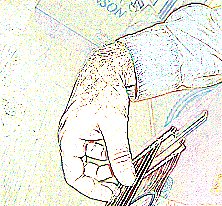 The first thing you should be aware of is general positioning of your hand and the angle of your wrist. This illustration shows poor wrist attitude. Make a conscious effort to have your wrist be less bent than this. The first illustration in this article shows better wrist angle.
The first thing you should be aware of is general positioning of your hand and the angle of your wrist. This illustration shows poor wrist attitude. Make a conscious effort to have your wrist be less bent than this. The first illustration in this article shows better wrist angle.
With your wrist bent like this your tendons and muscles are taut and you will not be able to achieve a relaxed and fast technique. This may seem like a more comfortable position at first but train yourself out of this and it will pay off in huge dividends in the future.
Practice your right hand technique
I recommend you make time in every practice session to do right hand oriented picking and strumming patterns. Make it a point to focus on your right hand and there are quite a few good reference, technique and instruction books that will help you with this. Typically you will get a series of picking patterns that you can practice over and over. With this practice you will muscles will learn the patterns and you will be able to do them without thinking about them. And as you get better you will get more and more complex patterns to practice.
Let's Talk a little bit about Right Hand Techniques
This is going to show you why the right hand is so very important to classical guitar playing. It is in this hand that playing the instrument goes from a mechanical thing to a living breathing expression of you.
Two Major Types of strokes
- The Rest-stroke ( is called apoyando ), - the finger that plucks the string rests on the next string afterwards; and
- The Free-stroke (is called tirando ), - the finger hits nothing after plucking the string. Some players, particularly if they have long nails sometimes use this stroke almost exclusively.
The free stroke is the more natural of the two strokes and if you are a self-taught guitarist it might be the only stroke you make. But the rest-stroke is an important part of the technique repertoire and you should practice it. Listen to the two strokes and get a feel for how they express the notes differently. Rest-strokes may be awkward for you at first but with practice you will improve and integrate into your box of playing tools.
Alternation of Fingers
This is a big part of playing and even the best players need to practice this on a regular basis. Rarely are any two notes in a row played with the same finger (with the exception of the thumb) .. You have to learn to alternate fingers cleanly and quickly and this skill is made even more difficult when you are moving across strings. And you need to practice it in a variety of different fingering patterns.
Walking the Strings - An Easy way to practice and improve
If you want to just cook up a way for your right hand play to improve you can easily make your own exercises to practice. Here is a suggestion for your own exercises and you can do this with all the strings open so you focus only on your right hand or you can practice it while doing scales.
Heres how to do it: Simply pluck down then up the six strings alternating between your index and middle fingers. Easy enough right? You started out with your index finger plucking the bass E string right? Now change that up and start your plucking by using your middle finger on the bass E string! Feels quite a bit different doesn't it? Now do a three finger pattern using index, middle and ring finger. And of course mix that pattern up by starting with a finger other than your index. This will probably feel a little awkward at first but keep at it. With a simple practice exercise like this your classical guitar playing will improve dramatically.
A free pdf of 120 studies for the Right hand on classical guitar
If you want to practice right hand techniques while you read music (two birds with one stone there) I have a free pdf you can download. It was created by Mauro Giuliani and it is pretty much a standard of any professional guitarists practice sessions. There are 120 exercises that progress in difficulty so as a beginner you can just slowly over time make your way further through the exercises.
The exercises use a pretty standard notation to show you which finger to use when plucking the strings.
- p = thumb
- i = index finger
- m = middle finger
- a = annular finger (ring finger)
This document is in the public domain so you are free to download it, print it and share it with your friends.
120 Studies for the right hand by Mauro Giuliani (2.4 meg pdf)
Another tip about notation
Matteo Carcassi of the famed Carcassi Method uses a different notation that you will sometimes see when hunting around for sheet music. It goes like this:
- X or + = thumb
- • = index finger
- •• = middle finger
- ••• = annular (ring finger)
If you are looking for a technique book that will really take your playing to new heights I strongly recommend the Scott Tennant book called Pumping Nylon. I own it and it has dramatically improved my playing. It has plenty of exercises and tips on right hand play but it is an overall technique book that has left hand play and a lot of other things that will take your overall playing ability to new heights.
Tuesday, July 1, 2008
10 Ways To Improve Your Classical Guitar Playing

One of the most frustrating aspects of playing guitar is when you reach the point where you are not improving. Whether you are a novice or a seasoned musician, we all face the same problem and ask the question, "Why am I not at the level I want to be and how can I get there?"
To add insult to injury, we see our guitar heroes in magazines and on T.V. everyday and it seems as if they are constantly inventing new tricks and improving their skills. When we read about them in Guitar World to try to emulate their skills and learn their tricks only to leave more confused. Becoming the ultimate guitarist is far harder than it looks.
So what is the key to success? While there is no one answer that can solve everyone's problem, there are a number of concepts and theories that can help you break through the barrier that keeps you from reaching your full potential.
The one thing that you need to realize is that you don't need to be a genius to become a great guitarist. The two key things you need to have in your possession are interest and commitment. You'll never meet a great guitarist who isn't passionate about music. They didn't get to the level that they are at by being apathetic and lazy. They took the initiative to go out and try to learn something new.
The guitarist who dares to challenge himself takes the risk of failing. This is where many musicians lose their battle with low self-esteem and quit. It's not that they didn't take the risk, rather, that they failed and couldn't pick themselves up again. If you realize that failure is a part of growth and that it takes many jam sessions to get some tricks down, you have just acquired the first skill you will need to become the ultimate guitarist.
I have compiled a list of concepts that I believe every guitarist should try out. Unlike other articles you will read, these short and simple steps ask you to do, rather that simply read. Thoughts and attitude are important but in the end it's what you do that counts to your audience.
Top 10 tips for success...
Let's get started with the top ten things you can do to obtain maximum results as a guitarist.
1. Learn something new
Educating yourself is the first step to becoming a better guitarist. Whether you choose to believe it or not, there's always something new to learn and master. If you are currently studying music in a conservatory, at school, or in college, you will find that learning will come more easier to you. If not, I highly recommend that you get in a program. While I believe in teaching yourself, I also know from first hand experience that motivation and encouragement from a teacher is priceless. Once you conquer the subject that you were learning, push yourself to learn something that you're not quite comfortable with. Learning within your comfort zone often results with you running around in circles.
2.Make your time count
Practicing does not make perfect, it makes permanent. That makes the time you spend playing your guitar all the more important. Don't waste your time fiddling around on your guitar. Dig in and learn something that will aid you on your quest for musical success. Set goals and work towards achieving them. Whether it's technique, tricks, or a new song, you can become better just by using your time more wisely.
3.Listen to more music
The more music that you are exposed to, the better guitarist you will become. Listen to the bands that you enjoy most and draw inspiration from them. Take note of what the musicians are doing in their songs and make a list of the techniques you want to learn. This can be the motivating force that gets you to play your guitar more often.
4.Surround yourself with excellence
When you play your guitar with people who are better guitarists, you not only learn from them but feel motivated to push yourself to keep up. At first this idea seems obscure. Why would you expose yourself to that kind of stress? Let's face it, if there's one thing that will make you get motivated quickly it's the fact that people are counting on you. Don't play with musicians who are arrogant and rude. Embarrassment doesn't foster self-esteem and will only get you down. The people you want to learn from are patient and understanding. Eventually you will find yourself at their level. It happens faster than you might think.
5.Ask yourself what will you do when you obtain the skills you want
What do you want to do with what you learn? Perhaps you want to make a CD or join a band and play at some local venues. Start planning for it now and use what you currently have. This ties into setting goals but is not to be underestimated. Knowing how you want to use your talent is important. Create a vision and use goals to act on it. Whether you want to play for others, or to the wall in your bedroom, the choice is yours.
6.Teach someone how to play guitar
To teach is to learn. If the only chord you know how to play is a G chord, show someone that. Why? Because it reaffirms what you know and solidifies your knowledge. I can tell you from personal experience that I have learned more through teaching than I ever learned through being taught. It forces you out of your comfort zone and when questions are asked, you need to know the answer. I'm a firm believer that anyone can teach someone something if they want to. Give it a shot and see the results for yourself.
7.Believe in your ability
Yes, I know how cliché this sounds. However, you need to hear it. You can do anything you put your mind to and if you choose to play guitar well, chubby fingers or not, you can! Don't listen to what others say and be true to yourself. This can be hard seeing as we live in a critical society that doesn't realize how much words can hurt. Keep at it and surround yourself with supportive people. More of a life lesson than a guitar lesson, but as far as I'm concerned music is intertwined with daily living.
8.You are incomparable
In case you haven't picked up the hint yet, you are the ultimate guitarist. There is no one like you and there will never be anyone who even comes remotely close to being like you. Integrate who you are into your music and you will never have a shortage of material. Your music will soon form into your own tone and style.
9. Learn what worked for others
Whether you research your favorite guitarist or talk to your guitar teacher, ask others what worked for them. I don't claim to know all the answers but when everyone puts their heads together, some really neat ideas start to flow. Networking allows you to give and receive at the same time.
10. Crush your weakness
We all know where we lack the most in the guitar realm. For me it's in technique and finger picking, for others it's something different. Whatever it is, don't ignore it while enjoying your recent victory. Keep attacking your weak points and you'll soon see improvement. The secret is that you never stop seeing problems and you continually get better over time. You'll never be stuck without something to do. Take out a sheet of paper and write them down. Then find the resources you need to help you destroy them. It's not unlike a war, but in the end you always win.







